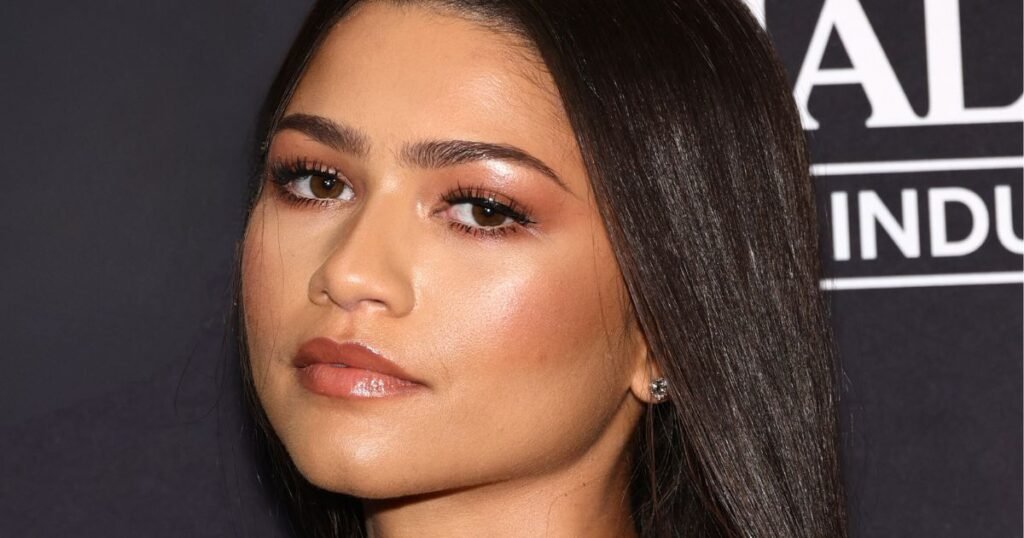Last Friday, I was laying in bed doing my nightly TikTok scrolling when panic set in. A video that appeared in my FYP made me believe that after years of thinking I had my makeup routine down pat, I might actually have been doing it wrong all along. While there’s obviously no perfect answer to how to do your makeup, the theory of high-contrast makeup can help enhance your features in the most flattering way.
I present everything you need to know about high contrast makeup theory and how to apply it to your current makeup routine.
What is the makeup theory of contrast?
Copied by the French creator of TikTok @alieenor:the theory of contrast makeup is based on “the difference in value between your face, eyes, eyebrows and hair”. According to Aliénor, keeping the differences in mind during makeup can be a game changer.
If you’ve ever edited a photo, you’ve probably noticed the “contrast” option at the bottom of your editing app. Turning the slider off causes the shadows and highlights in your image to be more or less spread out, and the same goes for high contrast makeup. Aliénor’s theory explains that by keeping the natural contrast level between your features in mind while applying makeup, you can enhance or tone down the contrast, similar to the aforementioned photo editing, but IRL for a more flattering, harmonious makeup look.
If you’re still confused (I get it, I was too at first), Aliénor created an in-app TikTok filter that can be used to easily reveal your contrast levels.
Low contrast makeup

Features are considered low contrast when “the value difference between hair, eyes and skin is very low,” according to Ailénor. She describes the ideal low-contrast makeup look as “very soft and ethereal, kind of dreamy and not too overpowering,” meaning no one should stand out more than the rest. The trendsetter suggests adding a little color to the cheeks or lips, but with a light hand so as not to emphasize one part of the face more than another.
Those with low contrast also want to prioritize the shades of makeup they use. For example, instead of a bright pink blush, choosing one that is closer to their natural blush can make them look more harmonious. Similarly, choosing an under-eye concealer in a shade close to their skin tone is a better option than a few shades lighter.
Medium contrast makeup

If you have “a slight difference between the value of your face and your hair, eyes, and eyebrows,” you probably have medium contrast, according to Ailénor.
Ironically, she goes on to say that creating a more natural makeup look is necessary add a bit of intensity with a blush or lipstick that has higher pigmentation. You’re also free to add a bit more intensity to the eyes, but you still need to make sure you choose shades that aren’t too much darker than your skin tone (think nudes, browns, and browns). The key to medium contrast makeup is to keep the features balanced; If you’re going for a soft, smoky eye, you’ll also want to add some lipstick to keep things in sync.
High contrast makeup

As you might have guessed, features are considered high-contrast when “the difference in value is very large between eyes, eyebrows, hair and skin,” says Eleanor. Here is the goal to soften the contrast between features rather than emphasizing it.
To soften the contrast of high-contrast features with makeup, Ailénor suggests choosing more intense eye makeup and very saturated lip colors. You have the opportunity to be experimental. Intense, graphic eye looks and deep, moody lip shades are made for you. Bold lip colors paired with minimal or no eye makeup are also especially flattering on those with high contrast.

ABOUT THE AUTHOR
Tinsley Crisp, Fashion & Beauty Staff Writer
Tinsley Crisp is a Fashion and Beauty Staff Writer at The Everygirl and specializes in reporting on the season’s latest trends and hottest products. As a New York-based stylist, she is committed to injecting joy into the art of dressing and delivering accessible yet ambitious content to our readers.
